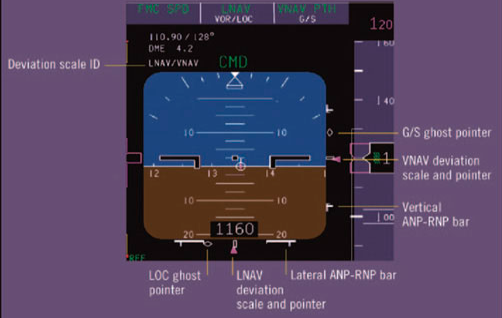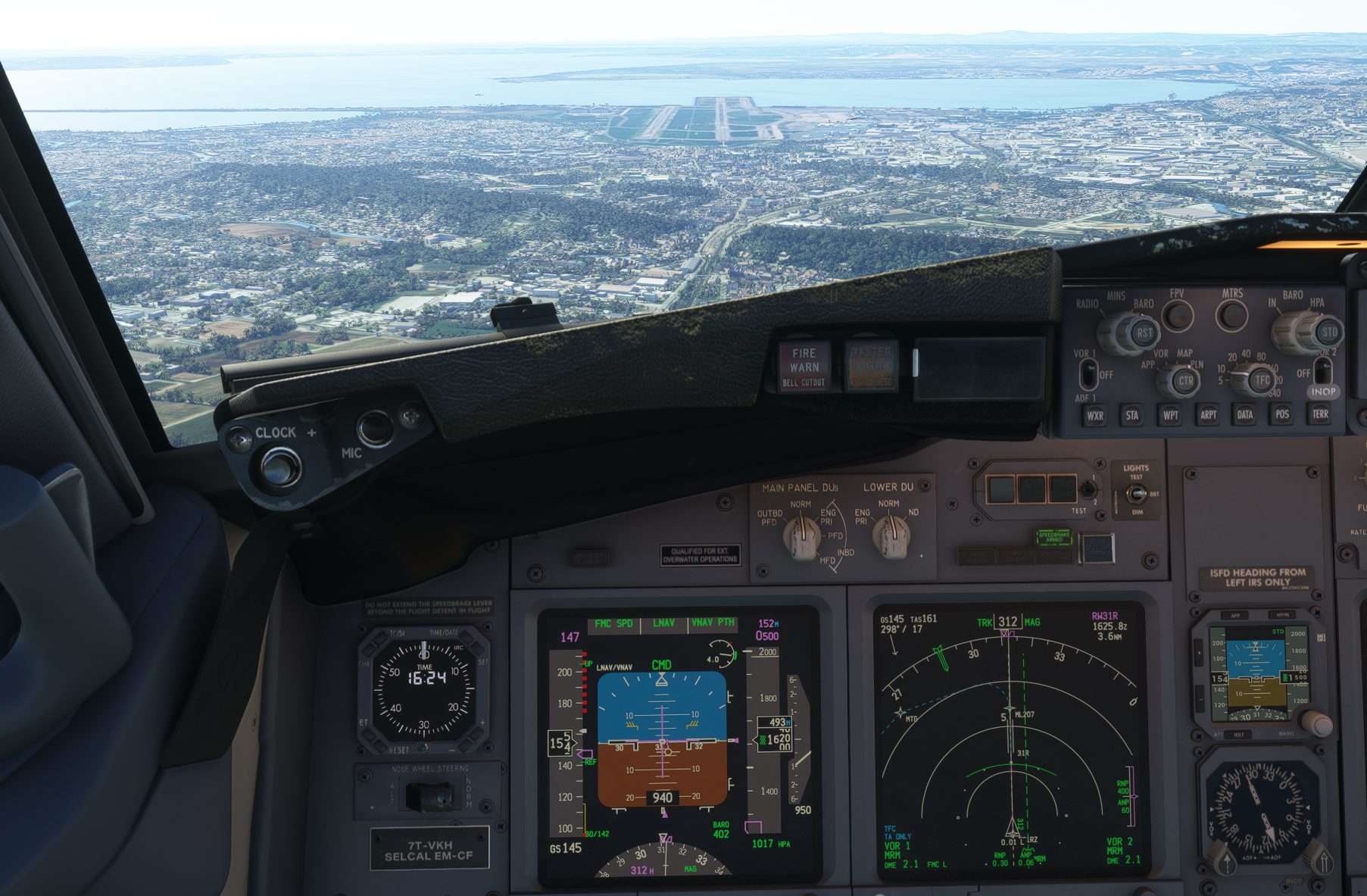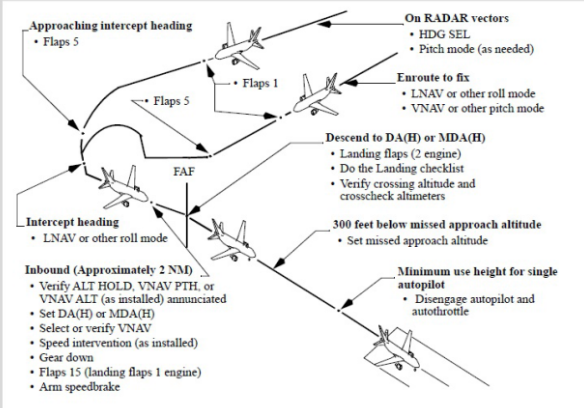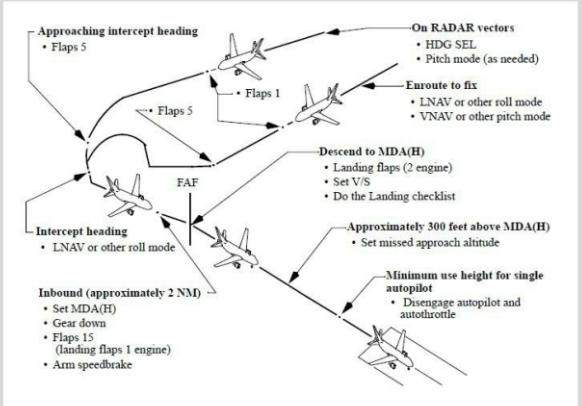¶ Foreword
RNP approaches may be flown provided the RNP being used is equal to or less than
the RNP specified for the approach. Use of LNAV with the autopilot and F/D is
required.

Required pitch and roll modes are;
-If Using LNAV/VNAV minima; use LNAV/VNAV modes for aircraft equipped with NPS.
-If Using LNAV minima; use LNAV/VNAV or LNAV/ V/S modes for aircraft without NPS.
Navigation Performance Scales (NPS) is a new display feature that integrates the
current lateral navigation (LNAV) and vertical navigation (VNAV) with actual
navigation performance (ANP) and required navigation performance (RNP)
(See the picture below)
¶ Approach Preparation
- Select the approach procedure from the arrivals page of the FMC.
- Prior beginning the approach the crew must check the following items:
Equipment that must be operational prior to starting the approach
Selection of the approach procedure, normally without modifications, from the
Altitude Selections/Awareness navigation database
Maximum Lateral and Vertical Deviations for RNAV Ops
If a deviation above the path occurs, the crew should apply the
criteria for a stabilized approach to determine the need for a
missed approach. For airplanes with NPS, the crew can refer to the
NPS deviation indications. Full scale lateral and vertical deviation
for NPS is equal to the FMC RNP value. If the deviation approaches
the limit, an immediate correction back to the path is needed. If the
deviation exceeds the limit or an amber deviation alert occurs, a
missed approach is required unless the crew has suitable visual
reference to continue to a landing. In the event of a missed
approach for excessive deviation, the crew must continue to make
corrections back to and maintain the required course
¶ Instrument Approach Using VNAV
When practicing a RNP approach using the LNAV/VNAV , select LNAV or other appropriate
roll mode. Approaching the FAF (approximately 2 NM), set the DA(H) or MDA(H) in the MCP
altitude window, select VNAV, and ensure VNAV PTH and appropriate roll mode is
annunciated.
If desired altitude is not at an even 100 foot increment, set the MCP altitude to the nearest
100 foot increment above the altitude constraint or MDA (H) .

As soon as the airplane is at least 300 feet below the missed approach altitude and
stabilized on final approach in VNAV PTH, set the MCP altitude to the missed approach
altitude.

¶ Instrument Approach Using V/S
When established on an intercept heading, select LNAV or other appropriate roll mode.
Approaching the FAF (approximately 2 NM), set the MCP altitude window to the DA (H) or
MDA (H).
At or after the FAF, select V/S mode and descend at appropriate vertical speed to arrive at
the DA (H) or MDA (H) at a distance from the runway (VDP) to allow a normal landing
profile. Initial selection of an appropriate V/S should be made considering the recommended
vertical speeds that are published on the approach chart, if available. These recommended
vertical speeds vary with the airplane's ground speed on final approach. If no recommended
vertical speeds are available, set -700 to -800 fpm.
Approximately 300 feet above the DA (H) or MDA (H), select the missed approach altitude.
Leaving the DA (H) or MDA (H), disconnect the auto throttle when disengaging the autopilot.
Turn both F/Ds OFF, then place both F/Ds ON. This eliminates unwanted commands for both
pilots and allows F/D guidance in the event of a go-around. Complete the landing

For example in the table above we can see that the glide path angle is 3.00° to know exactly
the V/S that we must follow we use the following mathematical formula:
V/S (FPM) = Glide path angle (°) * GS(kt)
If our GS is 150KT
V/S=3*150=450FPM (feet per minute)

- None
- SOP B737
- VID 489972 - Creation